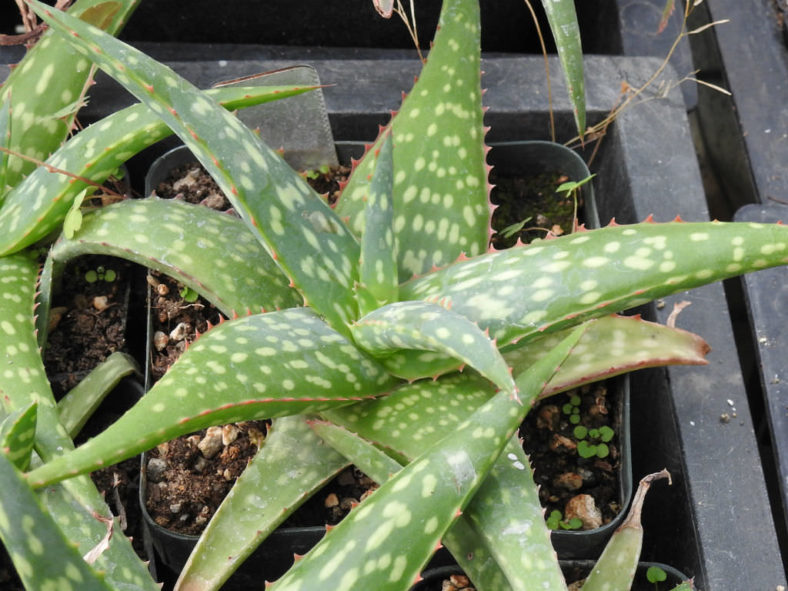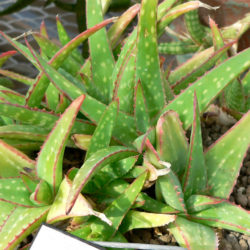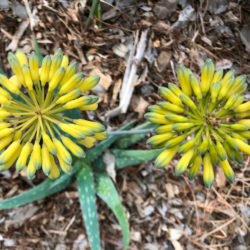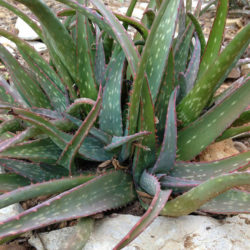Scientific Name
Aloe sinkatana Reynolds
Common Name(s)
Sudan Aloe
Scientific Classification
Family: Asphodelaceae
Subfamily: Asphodeloideae
Genus: Aloe
Description
Aloe sinkatana is a clumping succulent that forms rosettes of spotted, light green, lance-shaped leaves armed with sharp, red, well-spaced marginal teeth. The rosettes are usually stemless and can grow up to 12 inches (30 cm) in diameter.
The long-lasting flowers are yellow to red, tubular with exserted stamens, and appear in dense, pyramidal clusters on erect, branched, up to 24 (60 cm) tall stalks. This plant is a repeat bloomer, but the heaviest bloom time is in winter.
Origin
Aloe sinkatana is native to Sudan. It grows in the mountains at around 3,000 feet (915 m) above sea level.
Etymology
The specific epithet "sinkatana (sink-uh-TAWN-uh)" refers to the plant occurrence in Sinkat, a small town in eastern Sudan.

Hardiness
USDA hardiness zone 9b to 11b: from 25 °F (−3.9 °C) to 50 °F (+10 °C).
How to Grow and Care
Aloes are very forgiving plants. However, as with all succulents, Aloe must never be allowed to sit in stagnant water, and the plant should be carefully monitored to watch for signs of overwatering.
Aloes are not particularly fast-growing and will only rarely need repotting. Repot plants in the spring that are tipping over their pots or have ceased growing. Use a fast-draining potting mix with one-third of sand or pebbles. When repotting a larger plant, dividing the root ball carefully is possible. Some kinds of Aloe will send off off-sets that can be potted independently.
It needs intense light. They can withstand full summer sun once acclimated. In the winter, provide bright light. It prefers warmer temperatures of 70 to 80 °F (21 to 27 °C) but will survive down to 40 °F (4.5 °C). Feed with a cactus fertilizer in the summer only. Suspend feeding in the winter as the plant goes dormant.
See more at How to Grow and Care for Aloe.
Hybrids
Links
- Back to genus Aloe
- Succupedia: Browse succulents by Scientific Name, Common Name, Genus, Family, USDA Hardiness Zone, Origin, or cacti by Genus
Photo Gallery
Click on a photo to see a larger version.


